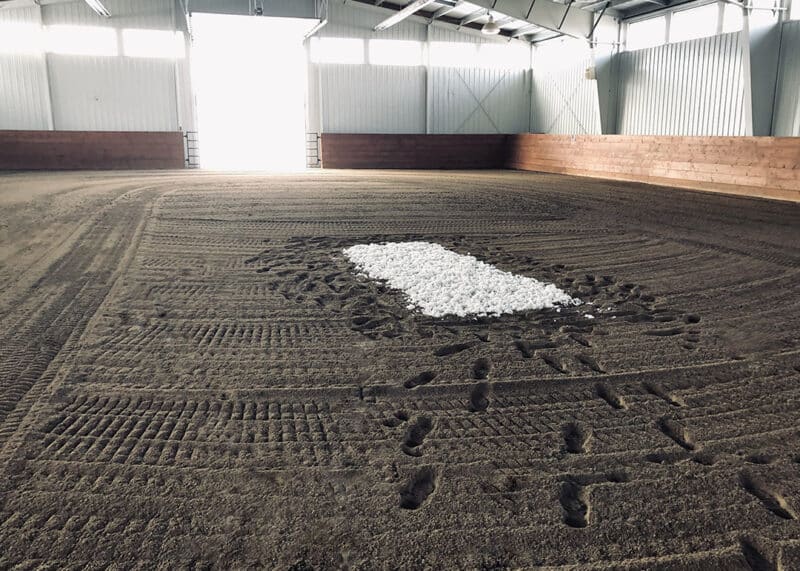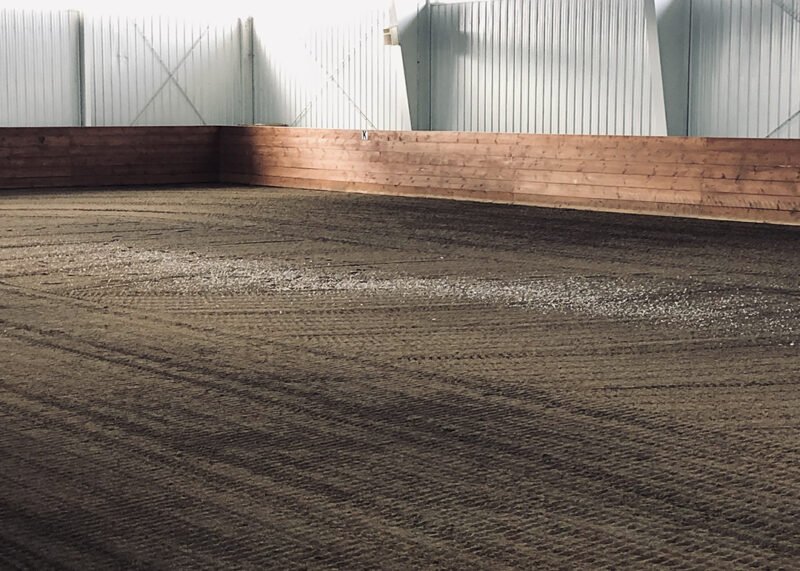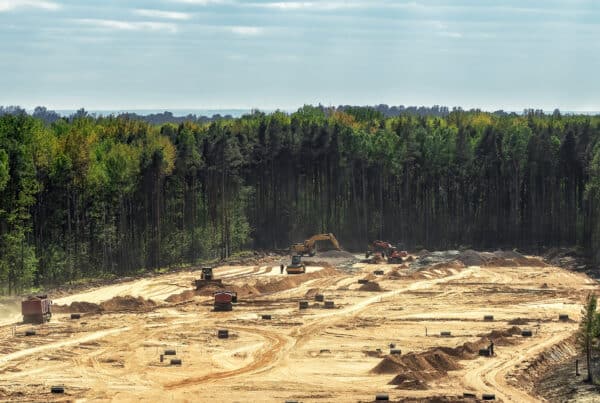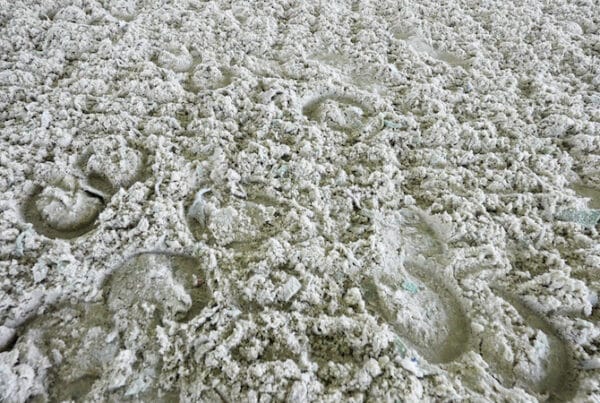When it comes to finding the perfect arena footing, we at Premier Equestrian know that it isn’t a case of “one size fits all.” Whether your farm is the home to elite show jumpers, a busy lesson program, or your special one-and-only equine partner, every horse needs the right footing to perform at their best. Of course, acquiring, installing, and maintaining arena footing represents an investment of time and money. For all these reasons, we want to help our clients make the best choice for their horses—the first time. That’s why before our clients sign on the dotted line for their footing purchase, we recommend you “try it before you buy it” with an Arena Footing Test Strip.

“Many of our clients have existing sand, and they want to improve how that sand rides, in lieu of totally replacing the sand and starting fresh,” explains Chris Neihart, Premier Equestrian Executive Vice President. “An Arena Test Strip is an inexpensive way to try the footing out in a small swath, usually between 100 and 200 square feet.”
How Arena Footing Test Strips Are Used:
During the initial consultation, Premier Equestrian’s footing experts will learn more about their client’s concerns regarding their existing riding surface, identify goals for improvement, and discuss the overall budget for the project. Next, Premier Equestrian will complete a free arena sand analysis to analyze the quality, quantity, and type of sand already in the riding arena. We will consider this information in making the best recommendations for each client’s situation.
At this stage, the Arena Footing Test Strip comes into play, giving clients the opportunity to ride in a few strides of footing mixed with the recommended product.
“We have particular recipes that we follow to make sure the correct amount of a specific fiber or additive is blended with the type of sand currently in our client’s arena,” says Neihart. “An Arena Footing Test Strip replicates the recipe that we will give the overall quote on.”

For only the cost of freight, Premier Equestrian will ship the Arena Footing Test Strip right to your front door. Setting up the Arena Test Strip is straightforward, and most clients can do it themselves in about an hour:
-
- First, mark off a 5-foot by 20-foot rectangle, either along the track or on the centerline.
-
-
- Next, open the box and use hand tools like a shovel, rake, or garden tiller to evenly blend the fiber and sand together within the rectangle until it is uniform. If you have an arena groomer, we don’t recommend using it to install your test strip because groomers tend to pull the material outside of the demarcated quadrant, skewing the result.
- Ride through the marked area with the footing test strip blended in, and feel the difference in the footing with the rest of your arena.
-
“Once installed, the Arena Footing Test Strip allows a few strides through the footing that has been improved,” says Neihart. “Customers can then compare and contrast the area with the product mixed into the virgin sand that’s next to it.”
The Arena Footing Test Strip is a key step in the footing selection process because it helps align client expectations with what the footing can deliver. Arena Footing Test Strips give clients confidence that the selected product is the right choice for them—before they invest thousands of dollars in the project.
“It’s important to me that people know what they are getting—that when I say that this footing will create firmness, stability, and grip, for example—the client can feel the difference, and decide if they like it,” says Neihart. “Once the client knows that it is working to the degree they want it to, and they are sure they love it, that is the time to place the full order.”
SPEAK WITH A PREMIER FOOTING SPECIALIST
About the author
Christina Keim is a professional equestrian and writer based at Cold Moon Farm in Rochester, NH. Over the course of her career, she has worked as a barn manager, head groom, riding instructor, and collegiate equestrian team coach. In 2015, she founded Cold Moon Farm with the mission to promote sustainable living, conservation, and the highest standards of compassionate horsemanship.




